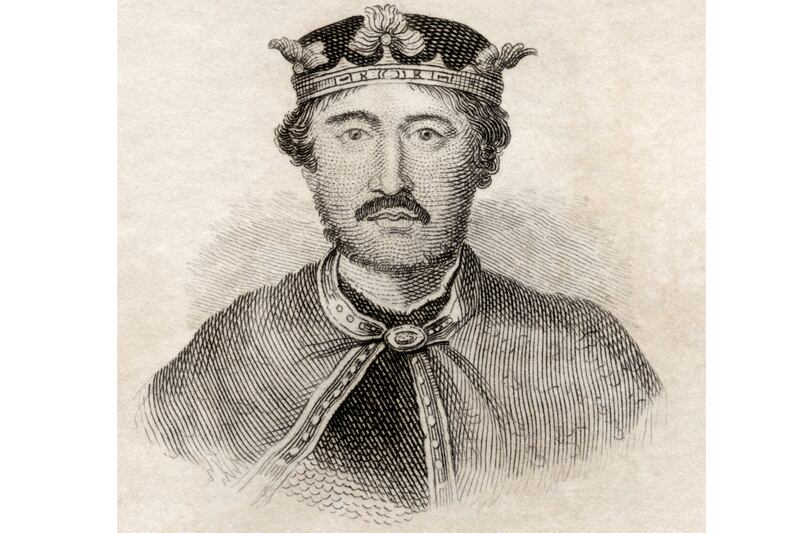You wait years for the chance to go poking around with the mortal remains of a medieval king, then two come along at once. Last month Richard III’s skeleton was paraded in front of the world. Now it’s Richard the Lionheart’s turn.

French scientists this week announced the results of tests they had been running on the Lionheart’s embalmed heart, which has been kept since the king’s death in 1199 in a lead box at the church of Notre Dame in Rouen, France. They were not able, alas, to examine it for actual lion DNA, or indeed any DNA, since the heart has long since decayed into a pile of rusty colored dust. All the same, they found a couple of pretty interesting things.
The heart, which was buried separately from Richard’s body (which lies with his father, Henry II, and mother, Eleanor of Aquitaine, in Fontevraud Abbey) and entrails (which were buried near the place of his death in Chalus), had been preserved with a concoction of plants and vegetable extracts. Some of them were very expensive: Richard’s heart was originally wrapped in linen and had been treated with frankincense, myrtle, daisy, mint, creosote, mercury, and possibly lime. It must have cost a fortune, and smelled rather delicious.
ADVERTISEMENT
But why bury a heart separately from the rest of the body? In the 12th century this was fairly standard practice for kings and aristocrats. In Richard’s case, there were good symbolic reasons. The Lionheart is most famous for his exploits on the Third Crusade, where he battled his way from Sicily to the Holy Land, conquered Cyprus, fought the Muslim leader Saladin, slaughtered combatants and innocents alike, and annoyed most of his allies by generally swanking about and showing off. But the majority of Richard’s career in soldiering was actually spent in Europe, defending the vast continental empire of the Plantagenet kings—which, during the 12th century, included approximately a third of mainland France.
In Richard’s day, the kings of England were also the masters of Normandy, Anjou, Maine, Touraine, and Aquitaine, and claimed to be overlords of Brittany. England provided them with a crown, but their priorities lay across the Channel. Richard spent less time in England as a proportion of his reign than just about any other king in English history. Normandy was arguably the most important part of his empire, having been united with England since William the Conqueror’s day (1066–87) and its rule was bitterly contested with the French kings. Rouen was the capital of Normandy, so when Richard died it made good sense to send the most symbolically important bit of the Lionheart to remind the Normans who was—or had been—boss.
Not that it did much good. Within five years of Richard’s death (he was succeeded by his brother, King John), Rouen had fallen to the French king Philip II “Augustus,” and the continental empire for which Richard had spent his life fighting was dismembered.
Much like the investigation into Richard III’s skeleton, the tests that have been run on Richard the Lionheart’s heart have addressed a historical mystery, but still leave many questions unanswered.
The mystery that has been settled concerns the nature of Richard’s death. We know that he was killed during a siege at Chalus: hit by a crossbow bolt fired from the battlements of a castle by a bloke using a frying pan as a shield. The wound Richard sustained went sour and he took more than a week to die. Was this the result of botched surgery or a poisoned arrow? Historians have wondered; now we can lay the case to rest. The tests on Richard’s heart do not show the presence of arsenic or any sort of metallic poison; it is likely, therefore, that he died as the result of gangrene rather than deliberate skulduggery.
There are many aspects to Richard’s life, however, that we can continue to debate. It was said by one chronicler that his heart was unnaturally large in physical size—others said it was actually not much bigger than a pomegranate. Unfortunately, since it is now a pile of dust, we don’t know who was telling the truth. That argument will have to continue. The heart also, obviously, tells us nothing about Richard's immortal soul. It was said that he spent 33 years in Purgatory following his death, which seems like a remarkably light sentence for a chap who slew literally thousands of people during his time on earth.
Neither does the heart reveal its deepest secret. Was Richard gay? There has long been some suspicion. In his youth he had established a close friendship with King Philip. The Third Crusade went some way to destroying this, but when they were young, the two men were so close that astonished observers said they even shared their bed. Was this an allusion to a sexual dimension to their relationship? Or did they share their chamber as a visual symbol of their political alliance? We do know that Richard and his wife, Berengaria of Navarre, never had any children, and generally appear to have had very little to do with one another. That’s about as much as we can say for sure.
One thing that Richard's heart leaves us in no doubt about, however, is this: prodding around with dead kings is fun. And the bandwagon is attracting new passengers all the time. There are moves to hunt for the lost remains of king Alfred at Hyde, near Winchester (879–99), and to dig for the missing Henry I (1100–35) in Reading. There are plenty more candidates for exhumation, too, if we fancy it. CSI: Middle Ages has found an enthusiastic audience. It would be silly to stop now.





